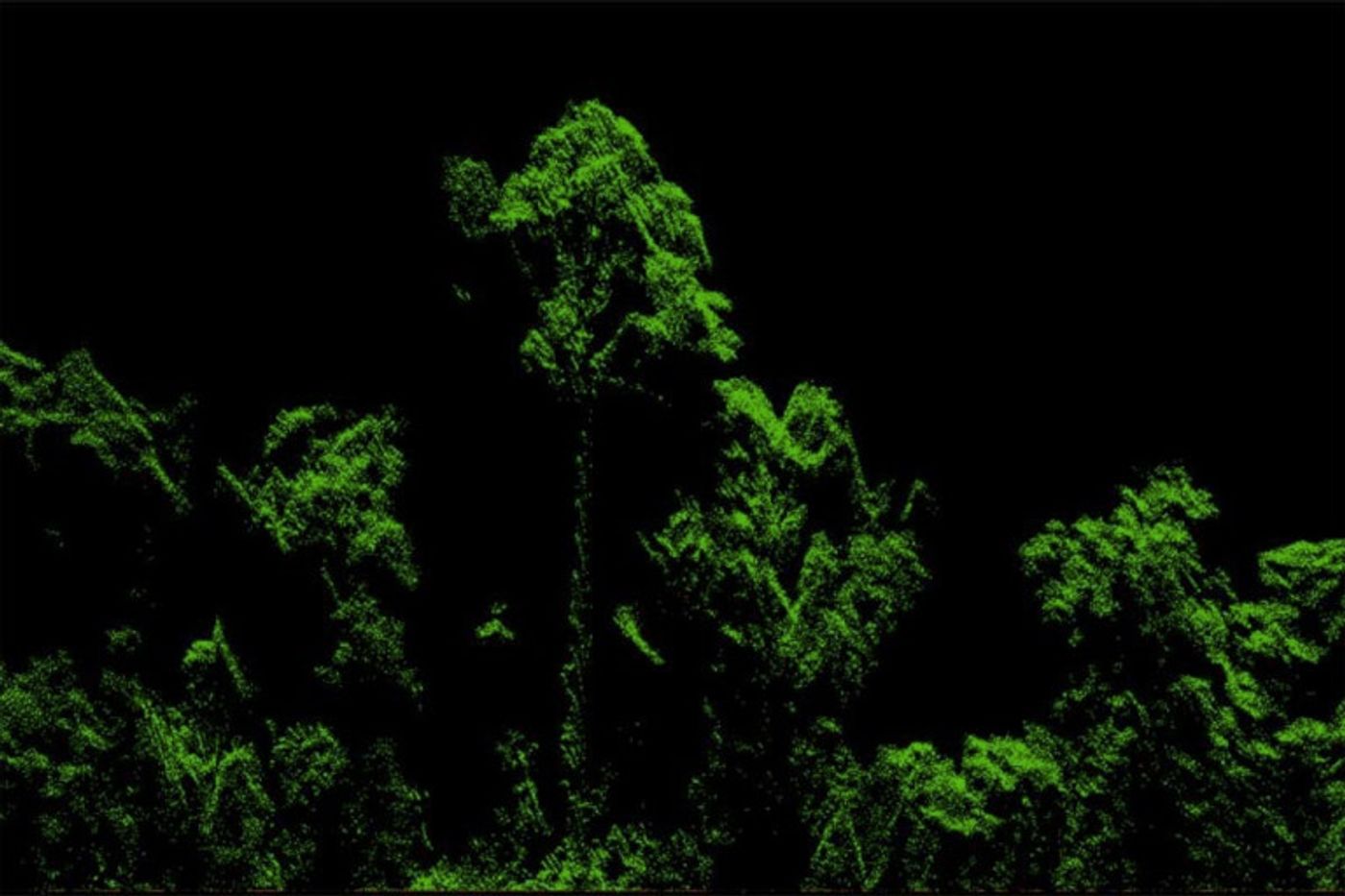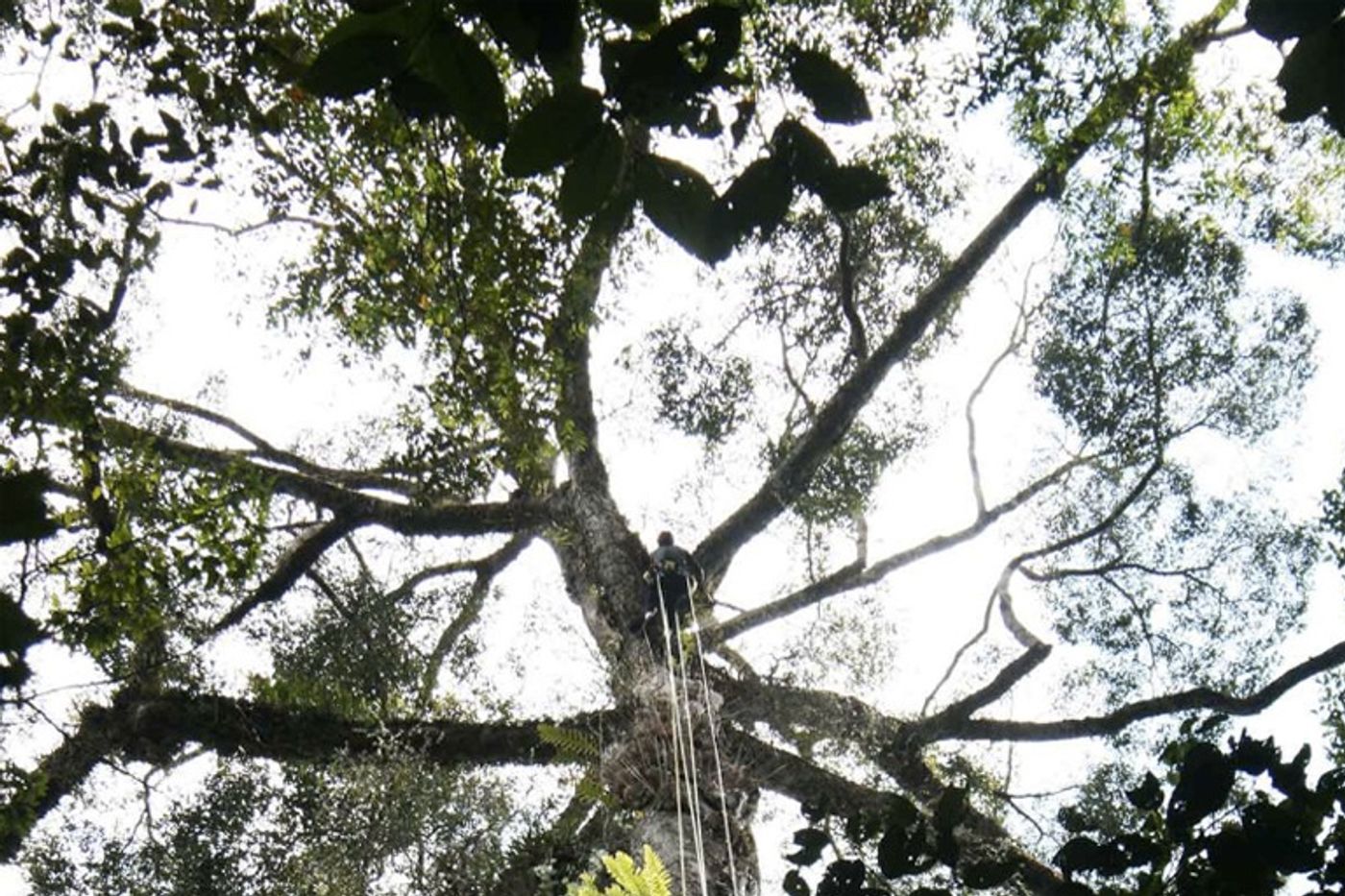“I don’t have time to take photos using a good camera because there’s an eagle around that keeps trying to attack me and also lots of bees flying around.”
This is what Unding Jami reported while he was hanging onto the side of the world’s most recently reported tallest tree in the tropics. Found in the Maliau Basin Conservation Area in Sabah, a state in Malaysian Borneo, the tree is a yellow maranti (Shorea faguetiana) measuring in 89.5 meters (293.6 feet) and is 1.2 meters (4 feet) taller than the previously record holder, another yellow meranti from Sabah’s Tawau Hills National Park.
The tree was found during during a research project of conservation scientists from the University of Cambridge and the Sabah Forestry Department that used an airborne LiDAR scanner to create 3D images of forest structure. Although the LiDAR technology is precise, to be even more precise the research team sent Jami, a local tree-climber, up the tree with a tape measure.
The result was a height that measures to 20 London double-decker buses or 65 people stacked up head-to-toe. Lead researcher Dr. David Coomes, from Cambridge’s Department of Plant Sciences says, "Trees in temperate regions, like the giant redwoods, can grow up to 30m taller; yet around 90m seems to be the limit in the Tropics. No-one knows why this should be the case.” A redwood in California’s Redwood National Park holds the record for the tallest tree in the world at 115 meters.

Although the yellow meranti is classified as endangered on the International Union for Conservation of Nature "Red list," there is currently hope for its conservation. Dr. Coomes explains that the discovery of this particular tree “comes at a critical moment because, set against a backdrop of decades of forest loss, the Sabah government has decided to protect and restore a huge tract of heavily logged forest just to the east of the Maliau Basin. It’s exciting to know that these iconic giants of the forest are alive and well so close to this major restoration project.”
Sabah’s Forestry Department is proud of the conversion in their politics. Partnering with several organizations and research teams, the department is leading restoration and conservation efforts. Sam Mannan, Director of the Sabah Forestry Department states, “Our international collaboration, as in this case, has brought great scientific dividends to the state and we shall continue to pursue such endeavors.”
Sources:
Treehugger,
Mongabay News










